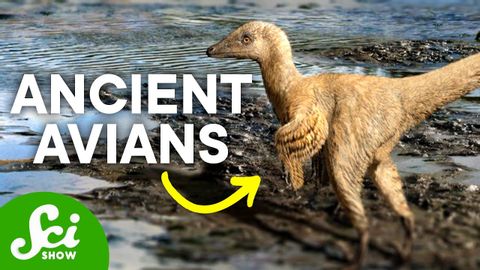恐龙时代的鸟类(The Birds That Lived in The Age of Dinosaurs)
joey joey 發佈於 2021 年 05 月 13 日  沒有此條件下的單字
沒有此條件下的單字US /ˈpɪriəd/
・
UK /ˈpɪəriəd/
- n. (c./u.)時期;(用於句末;表示斷定的口氣)就這樣;句號;月經;期間
US /ˈɛvɪdəns/
・
UK /'evɪdəns/
- n. (u.)證據;證據 (法律)
- v.t.表明;證明
US /ˈenʃənt/
・
UK /'eɪnʃənt/

